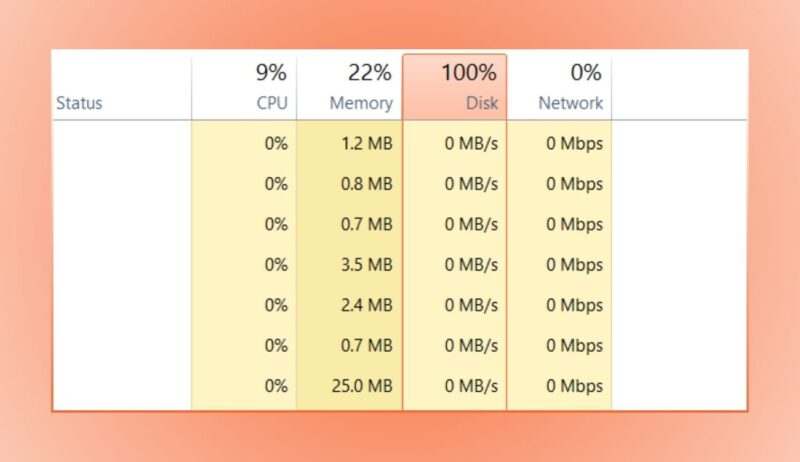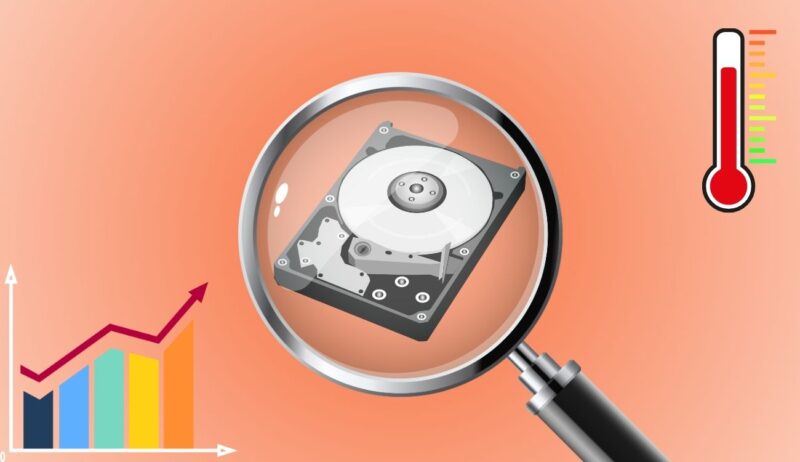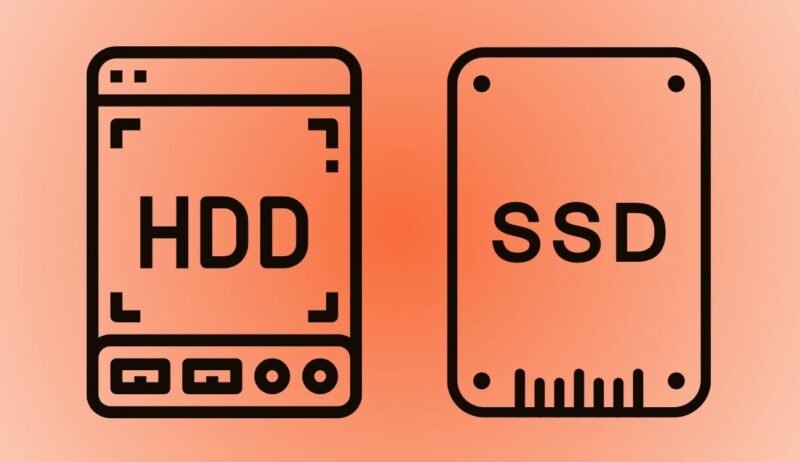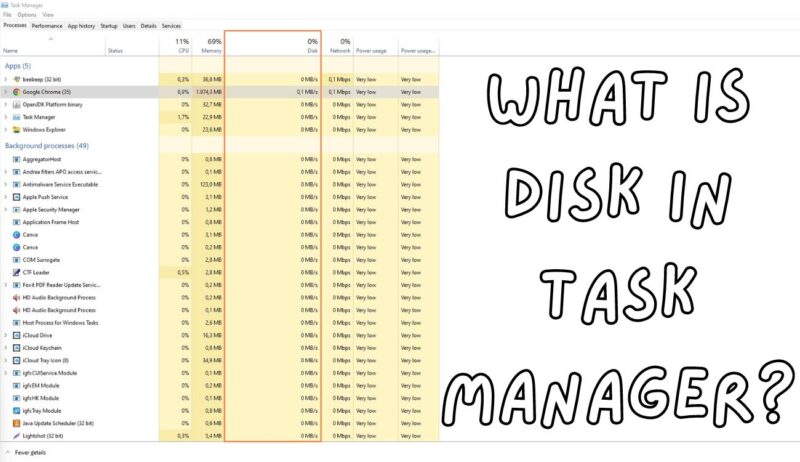Task Manager has been one of the base features in the Windows operating system since the early days. While most users are familiar with its primary functions – ending non-responding programs or checking system performance, there are also some advanced options that can be very useful.
One such component is the ‘Disk’ section. A lot of users never thought that exploring all the options in the Task Manager could be useful or interesting.
But before we dive into exploring the intricacies of managing tasks and the features, pros, and cons of the Disk in Task Manager, it’s essential to familiarize ourselves with the capabilities of PowerShell’s ‘Select-Object’ cmdlet, which can greatly improve your productivity.
Understanding the Disk Section
The Foundation
The Disk section in Task Manager gives you an overview of your computer’s disk activity. In essence, it showcases how intensively your computer’s storage device (HDD, SSD) is being accessed or utilized at any given moment.
It’s an essential tool for diagnosing performance issues or understanding your system’s inner workings.
A Deeper Look
When you open Task Manager and navigate to the ‘Performance’ tab, you’ll find a graphical representation of disk usage, often denoted in percentages. If this number is perpetually high, it may indicate that your disk is being overworked – a potential issue in your system’s performance.
Moreover, you can even identify which processes or applications are causing the high disk usage, aiding in troubleshooting.
Monitoring Disk Performance

- Real-time Graph: The Task Manager offers a real-time graph, displaying how your disk performs over time. This can be instrumental in identifying spikes in usage or prolonged periods of overactivity.
- Read and Write Speeds: Beneath the graph, you’ll notice two metrics – ‘Read speed’ and ‘Write speed’. These numbers represent the speed at which data is being read from or written to the disk. It’s a clear indicator of the intensity of disk operations.
- Storage Capacity: Task Manager also displays the total storage capacity of the disk and how much is currently in use. It’s a quick way to check if you’re running out of space, which can degrade performance.
Identifying Demanding Processes
The ‘Processes’ tab in Task Manager provides a detailed breakdown of which applications and background processes are using the disk the most. This is invaluable for:
- Spotting malfunctioning software that might be causing excessive disk reads/writes.
- Determining if certain processes are hindering system performance.
- Making informed decisions on which applications to close or uninstall for smoother operations.
Advantages of Monitoring

Boosting System Performance
Understanding disk usage can directly help enhance system performance. If you notice a perpetually high disk utilization, it might be time to consider upgrading to a faster SSD or decluttering your current storage.
Troubleshooting
With the ability to pinpoint resource-hungry processes, you can swiftly identify and rectify issues. This might involve updating software, uninstalling problematic applications, or reallocating resources.
Accurate Hardware Decisions
If you’re consistently pushing the limits of your disk’s capabilities, it’s a clear sign you might benefit from a hardware upgrade.
Whether it’s adding more storage or transitioning to faster disk technology, monitoring informs your decisions.
Potential Drawbacks

Not Always Intuitive
For novice users, the information presented might seem overwhelming. While it offers a wealth of details, interpreting what’s “normal” versus “problematic” can be a challenge without some baseline knowledge.
Doesn’t Replace Dedicated Tools
While Task Manager provides a snapshot of disk activity, it lacks the depth that specialized diagnostic tools offer. For in-depth analysis or troubleshooting, external software might still be required.
Potential Overemphasis on Disk Activity
A high disk utilization doesn’t always translate to a problem. Sometimes, intensive tasks naturally require significant disk activity. Fixating on this metric alone can lead to false diagnostics.
Disk Types Reflected in Task Manager

Traditional Hard Drives (HDD)
Hard Disk Drives, known for their spinning disks, are a common sight in many older computers and some budget machines. Their operation often results in a distinct sound, and in Task Manager, their slower read and write speeds compared to SSDs are evident.
Solid State Drives (SSD)
Faster and silent compared to HDDs, SSDs have become the norm in modern devices. Their lack of moving parts means faster data access times, and this difference is usually noticeable in Task Manager with quicker read/write speeds.
Decoding Disk Activity Colors
Green & Blue Shades
In Task Manager, the disk activity is color-coded. While green usually indicates reading activity, blue shows writing activity.
By observing these color differentiations, you can gauge whether your system is heavily reading data (like loading files) or writing data (such as saving files).
Exploring the Queue Length
Understanding the Metric
Disk Queue Length indicates the number of pending operations for the disk. A consistently high number can suggest that the disk is a performance bottleneck. While occasional spikes are normal, a perpetually high queue length requires attention.
Implications of a High Queue Length
When the Disk Queue Length is high, it can result in laggy system performance. It might indicate that the disk isn’t able to keep up with the requests, and this can be due to various reasons like disk fragmentation, failing hardware, or software conflicts.
Importance of Response Time
What It Represents
The Disk Response Time in Task Manager provides insights into how long the disk takes to read or write a request. A lower response time is desirable, indicating that your disk is promptly handling requests.
Factors Affecting Response Time
Numerous elements can impact this metric. It might be due to the type of disk (HDD vs. SSD), the health of the disk, the presence of malware, or even outdated drivers. Regular maintenance and updates can help optimize this number.
Frequently Asked Questions (FAQs)

Why does my Disk Usage in Task Manager show 100% even when I’m not running many applications?
This can be due to several reasons. It might be a background process updating software, a malware activity, or even a hardware issue like a failing disk. It’s also possible that some system functions, like indexing or automatic updates, are utilizing the disk intensively. Investigating the processes tab can give more specific insights.
How often should I check the Disk section in the Task Manager?
For most users, regularly checking isn’t necessary unless you’re facing performance issues. However, if you’re keen on monitoring system health, a monthly check or any time you feel your system is sluggish can be beneficial.
Are there alternatives to Task Manager for monitoring disk performance?
Yes, there are specialized tools and software like CrystalDiskInfo, HD Tune, and SSD Life that offer deeper insights and diagnostics related to disk performance and health.
Is there a way to set alerts for high disk usage using Task Manager?
No, Task Manager doesn’t provide alert functionality. However, third-party software or scripts can be set up to monitor and alert you based on specific system metrics, including disk usage.
The Bottom Line
As you can see, the main reason to use this feature is the fact that you can get all kinds of valuable insights that will help you keep your device in the best condition. That is especially important when you are dealing with more demanding software.
Also, testing different features and exploring more about them can lead to many other benefits. You can read more about that in one of our latest articles in Black Boys Report.
